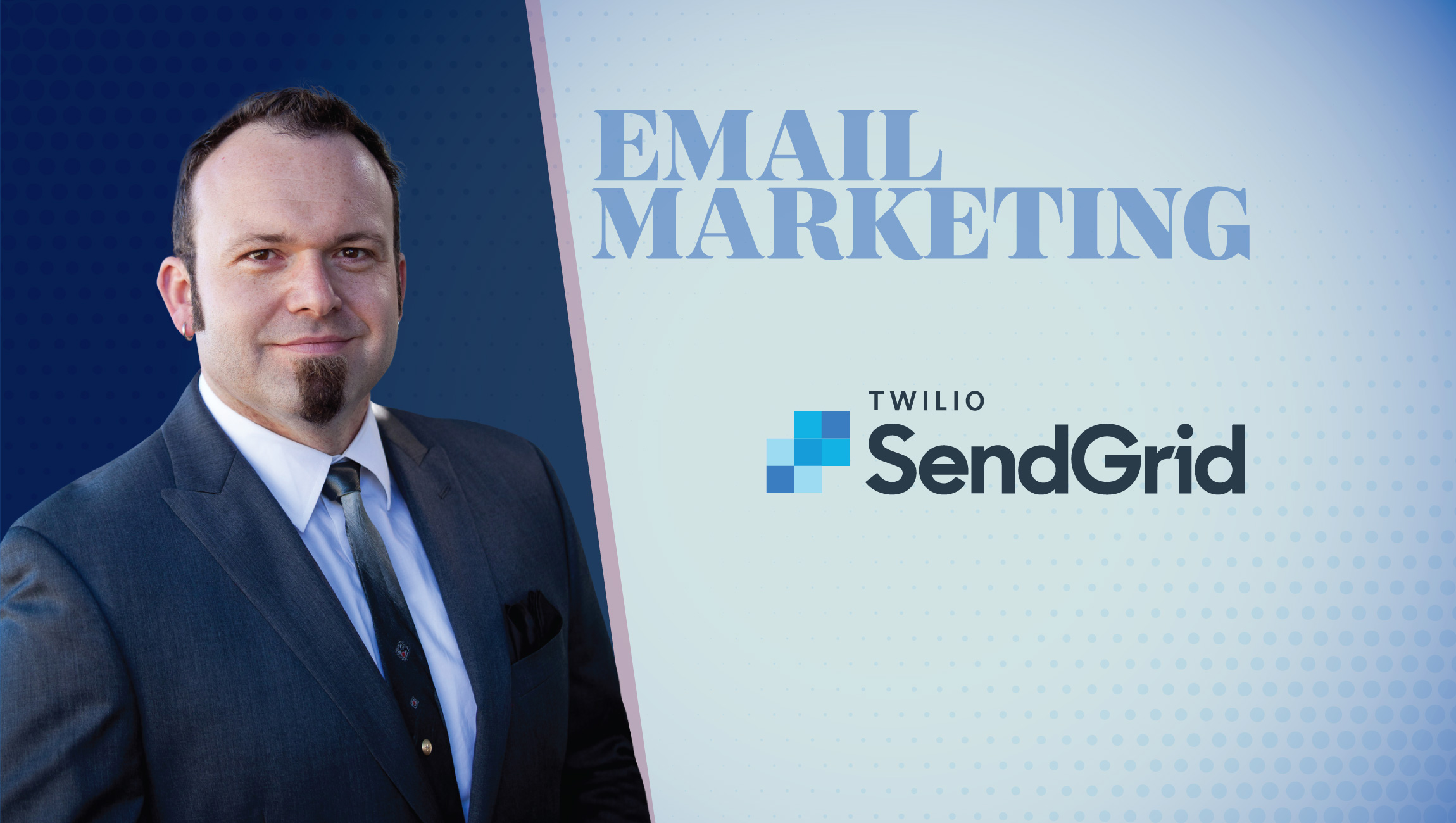Could you tell us about your current role and the team/technology you handle at Twilio SendGrid?
As VP of Industry Relations at Twilio SendGrid, I represent the company among various industry trade groups that range from the anti-abuse community, such as the Messaging, Malware, Mobile Anti-Abuse Working Group (M3AAWG), to policy-focused organizations and Email Marketing forums. can has been part of the fabric and underlying growth of the internet since the first email was sent in 1971. As a result of email’s pervasive nature, different communities have grown to address challenges that range from technical to legislative and everything in between.
Twilio SendGrid’s 80,000+ paying customers rely on our knowledge of the Email Marketing landscape to help guide, advise and empower them to establish meaningful dialogs with their customers. As one of the largest email senders on the planet, participation in these critical communities enables Twilio SendGrid to stay abreast of the rapid pace of innovation and the global changes in privacy law while educating marketers around the globe on best communication practices and technologies that help not only secure their brand but protect the overall health of the digital messaging ecosystem.
Could you explain how your latest Email Validation API translates to better automate email services?
Mailbox providers hold the keys to the inbox and they evaluate the validity and reputation of a sender based on multiple factors including email bounce rates. If a customer sends an email to an invalid email address, this will increase bounce rates. Mailbox providers are likely to place emails from senders with a reputation for higher bounce rates in the junk folder, or not deliver them at all. Bounces are just one metric that helps mailbox providers determine the reputation of a given sender; numerous other pieces of data help define sending reputation and that construct changes from one mailbox provider to another.
Twilio SendGrid’s real-time Email Validation API helps protect the sending reputation of our customers by validating email addresses before emails are sent. Our validation API uses Machine Learning and mailbox provider-friendly practices to catch typos in-form, after form submission and entered through manually at POS. Ultimately, decreasing the risk that emails will bounce and protecting our customers’ sending reputation. Our API checks for proper email syntax, MX or A record, shared role, disposable domains, keyboard smashes, known hard bounces, suspected bounces, and provides detailed validity likelihood results as well as typo correction suggestions so customers can make informed sending decisions. Organic growth and informed consent rely on the active participation of recipients to enter their email address—those entries are subject to human error which can have negative consequences on senders that don’t take stock of the addresses entering their system.
Since Twilio SendGrid is an email delivery and validation solution, maintaining white hat sending practices for our customers is critical. Therefore we do not utilize the broken SMTP-handshake method. A broken SMTP-handshake attempts to validate an email address by connecting to the mailbox provider until they receive a response and then breaks the connection without sending a message. This method has been known to be used by Spammers and mailbox providers often send inaccurate feedback to the validation service providers that use this method.
What are the modern Email Validation benchmarks that CIOs and CMOs need to check with their ESP providers?
CIOs and CMOs need to know that their ESPs 1) Use industry-leading validation technology to protect sending reputations and 2). Clearly understand what this technology is designed to accomplish and more importantly, how not to abuse it. We often see these products applied to predict validity and engagement of the address—this is a tough problem to solve in tandem. We recommend confirming that your ESP validates the address and is not trying to make implications of the user’s engagement behind the address.
Once you know the product is available and is being used properly, look at your metrics to confirm that there is a decrease in “non-delivered” events for the reason of “invalid address”. If you happened to have a high instance of these before using the validation tool (20+%) then you should see an increase in opens and clicks after using the product. This will be due to the mailbox provider reacting to a sender reducing such a high instance of invalid addresses and most likely placing mail in the inbox more often after this issue is resolved.
What kind of data are you leveraging to continuously feed your Data Engine?
SendGrid’s email validation Machine Learning model is trained on our email pipeline data which sends over 2 billion emails daily. This allows the ML model to pick up on the patterns that define deliverable addresses as well as invalid addresses, along with potential typos and “keyboard smashes.” We also leverage our massive dataset to identify previously hard bounced, invalid email addresses, protecting you from sending to known non-existent addresses. Senders need to understand that sending emails to domains that don’t exist, e.g. @home.com and others, is not without peril.
Recycled traps, sometimes known as honeypots, are addresses and domains that at one time might’ve received and accepted email but have since been shut down. After a period of time, a mailbox provider might turn some of these addresses back on to see who is still attempting to send that address, which hitherto has been issuing a user does not exist bounce, email. Senders with good bounce handling practices will have long since factored out that email.
In the modern era of Conversational AI for digitized experiences, how does Twilio SendGrid identify, plan and execute its product roadmap for various customers?
We believe that Twilio SendGrid is well positioned within the customer communications space to realize the promise of AI. With SendGrid processing over 50 billion emails every month, the sheer volume of sending activity and resulting data on our platform makes the latest approaches to machine learning possible. That is why Twilio SendGrid’s real-time Email Validation API is able to use Machine Learning to determine the likelihood that an email address is valid to help email senders make informed recipient selection decisions to protect their email reputation.
Before conversation AI can deliver on the promise of digitally driven conversations at scale the message must first reach the intended recipient. ML-driven validation ensures that when a customer is prepared to engage a brand, the lines of communication are open and ready.
Do you think AI capabilities help tech companies to better pitch and sell their products and services to prospects and customers?
I think the important thing to remember about AI is that someone has to program it, train it, check it periodically and feed it a wealth of data for it to deliver the kinds of automation that help the humans behind AI focus on other things. AI is not Skynet, or at least we should all hope that it doesn’t become Skynet. AI helps us solve problems at scale—those solutions require keen human intuition and careful application. We can all mostly agree that AI is a topic of much debate and discussion in the trade press and among the media—I’m sure that in some cases it plays a differentiating role, but AI for the sake of AI will never close the kinds of deals that help a company achieve its bottom line. The most important thing is having a performant product that solves problems—if those problems are solved through AI great!—however, if the product doesn’t make customers’ lives easier, regardless of how much AI is baked into the product, then it’s back to the drawing board.
Len Shneyder is a 15+ year email and digital messaging veteran and the VP of Industry Relations at Twilio SendGrid. Len serves as an evangelist and proponent of best practices and he drives thought leadership and data-driven insights on industry trends based on the massive volume of email SendGrid delivers on behalf of their customers.
Len is a longtime member of M3AAWG (the Messaging, Malware, Mobile Anti-Abuse Working Group) and served on its board in addition to Co-Chairing the Program Committee. He’s also part of the MAC (Member Advisory Committee) of the EEC (Email Experience Council) where he serves as the organization’s MAC Chair. The EEC is a professional trade organization focused on promoting email marketing best practices. The EEC is owned by the ANA (Association of National Advertisers), a nearly 100-year-old organization where he also sits on the Ethics Committee. Also, Len has worked closely with the ESPC (Email Sender & Provider Coalition) on issues surrounding data privacy and email deliverability.
Millions of developers around the world have used Twilio to unlock the magic of communications to improve any human experience. Twilio has democratized communications channels like voice, text, chat, video, and email by virtualizing the world’s communications infrastructure through APIs that are simple enough for any developer to use, yet robust enough to power the world’s most demanding applications. By making communications a part of every software developer’s toolkit, Twilio is enabling innovators across every industry — from emerging leaders to the world’s largest organizations — to reinvent how companies engage with their customers.












